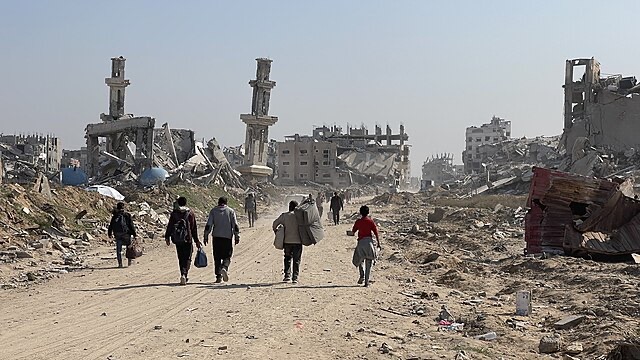In a critical and controversial escalation of the war in Gaza, Israel has announced that it has successfully surrounded the southern city of Rafah—an area previously considered one of the last remaining safe zones for Palestinians. The move follows the completion of the Morag Corridor, a strategic land route that now allows Israeli forces to isolate Rafah from the rest of the Gaza Strip. Following this development, Israeli officials have made it clear: the military campaign is far from over. Instead, it is poised to “expand.”
This statement, delivered amid rising international concerns over civilian safety and forced displacement, signals a potential broadening of operations beyond current boundaries, with heavy implications for the humanitarian situation and regional stability.
What Is the Morag Corridor and Why It Matters
The Morag Corridor is the newest of several Israeli-established control zones across Gaza, named after a former Israeli settlement. This corridor now stretches from the Israeli border to the Mediterranean Sea, effectively bisecting the Gaza Strip. Its creation follows the pattern set by the Netzarim and Philadelphi Corridors, which were established earlier in the conflict as strategic choke points.
By sealing off Rafah with this third corridor, Israel has not only divided the Gaza Strip into disconnected enclaves but has also cut off vital supply lines and civilian escape routes. The intent, according to Israeli defense officials, is to isolate Hamas forces and deprive them of resources and reinforcements.
Previous Corridors: Netzarim and Philadelphi
Before the Morag Corridor, the Netzarim Corridor split Gaza City from the south, while the Philadelphi Corridor, running along the Egypt-Gaza border, was used to block arms smuggling and tunnel activities. These corridors have allowed Israel to exercise near-total military control over movement within Gaza, reshaping the operational landscape and complicating humanitarian relief efforts.
Now, with the Morag Corridor in place, Rafah finds itself encircled, a city under siege from land and air.
Rafah Under Siege
Rafah is more than just a geographic location. It is a city of more than 1.4 million people—most of whom are now internally displaced Palestinians who fled earlier fighting in northern and central Gaza. The siege of Rafah thus places hundreds of thousands of civilians in imminent danger, as food, water, and medicine supplies dwindle.
Israeli troops have reportedly seized key checkpoints and roads, and airstrikes in the vicinity have intensified. For Palestinians trapped inside, the city has become a bottleneck of despair, with aid groups warning of a catastrophic humanitarian collapse unless immediate relief is allowed in.
Mass Displacement of Civilians
The surrounding of Rafah has triggered a mass exodus, although options for escape are limited. Many families are now attempting to flee once again—despite having already been displaced multiple times. Makeshift camps, overcrowded shelters, and dwindling sanitation services are compounding an already dire crisis.
Meanwhile, the Israeli government continues to call on civilians to evacuate designated areas—an appeal human rights organizations say is untenable given the closed borders and destruction of previous safe zones.
Israel’s Security Zones in Gaza
Israeli Defense Minister Israel Katz recently confirmed plans to incorporate Rafah into Israel’s expanding network of “security zones”—military-controlled buffer areas where Palestinians would be permanently prohibited from returning. These zones are presented by Israel as necessary to prevent future Hamas resurgence.
Critics, however, see this as de facto annexation, arguing that Israel is redrawing Gaza’s geography through military force, violating international laws on occupation and forced displacement.
What Are “Security Zones”?
Security zones are defined by the Israeli military as regions where permanent civilian presence is considered a national security risk. Once designated, these areas become exclusion zones, heavily patrolled and frequently subject to drone surveillance, checkpoints, and military infrastructure development.
In Gaza, the increasing number of these zones has raised alarms that Israel is attempting to permanently alter the map—eroding Palestinian territorial claims and undermining any two-state peace framework.



